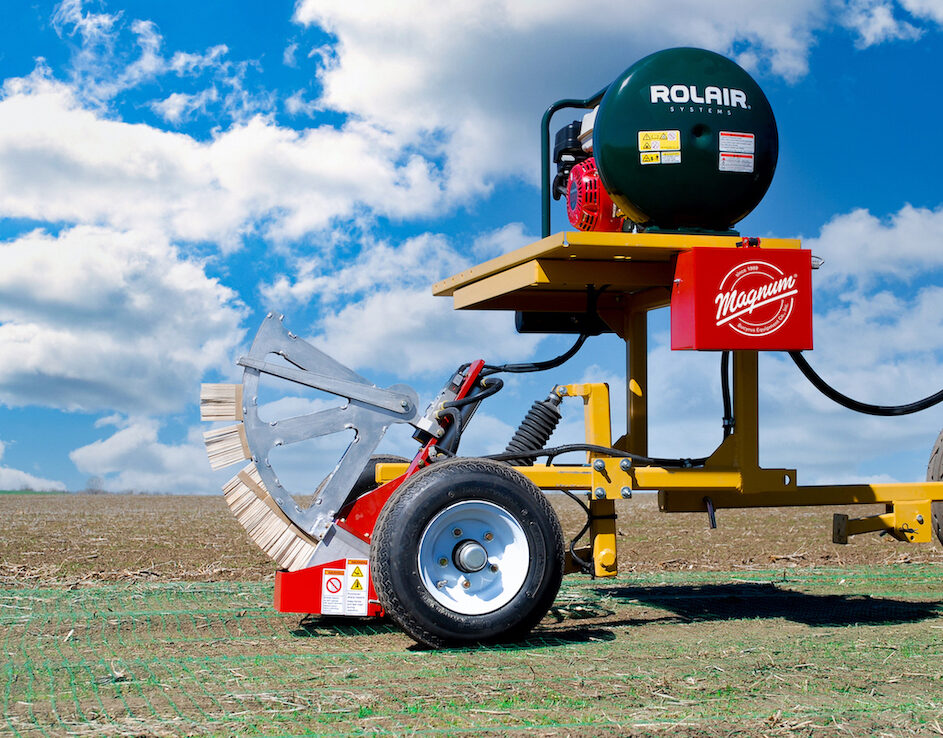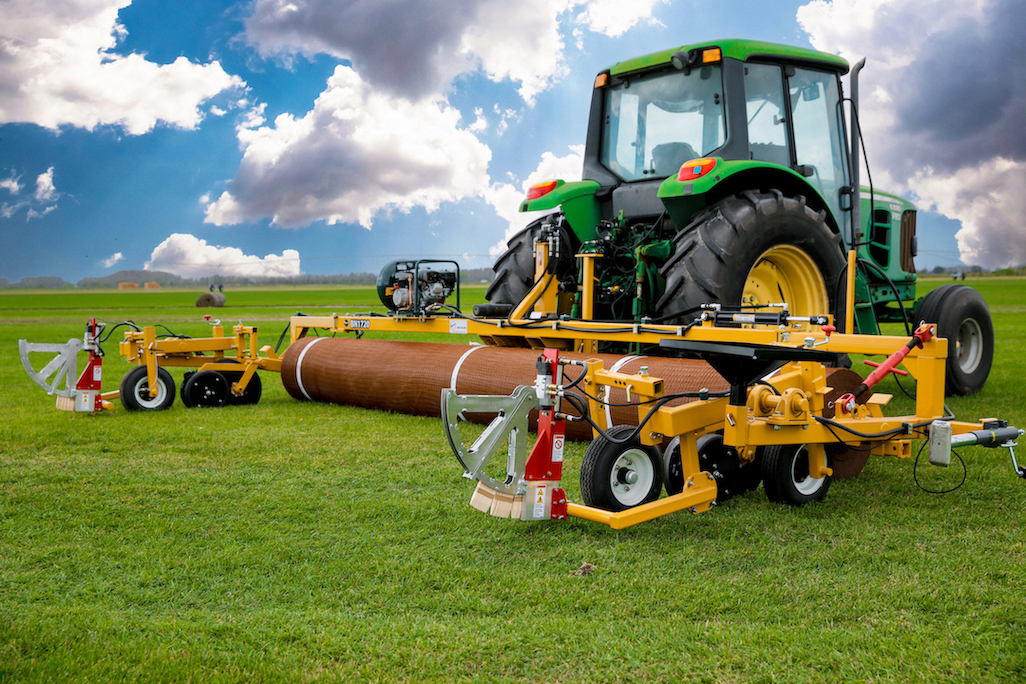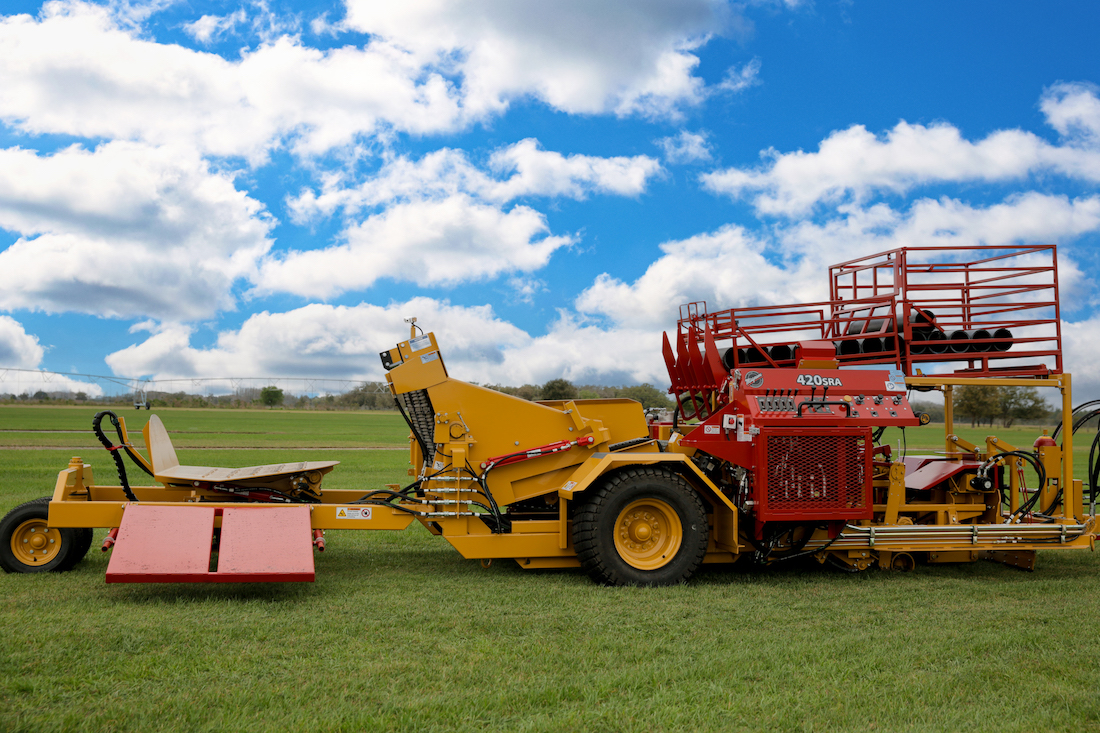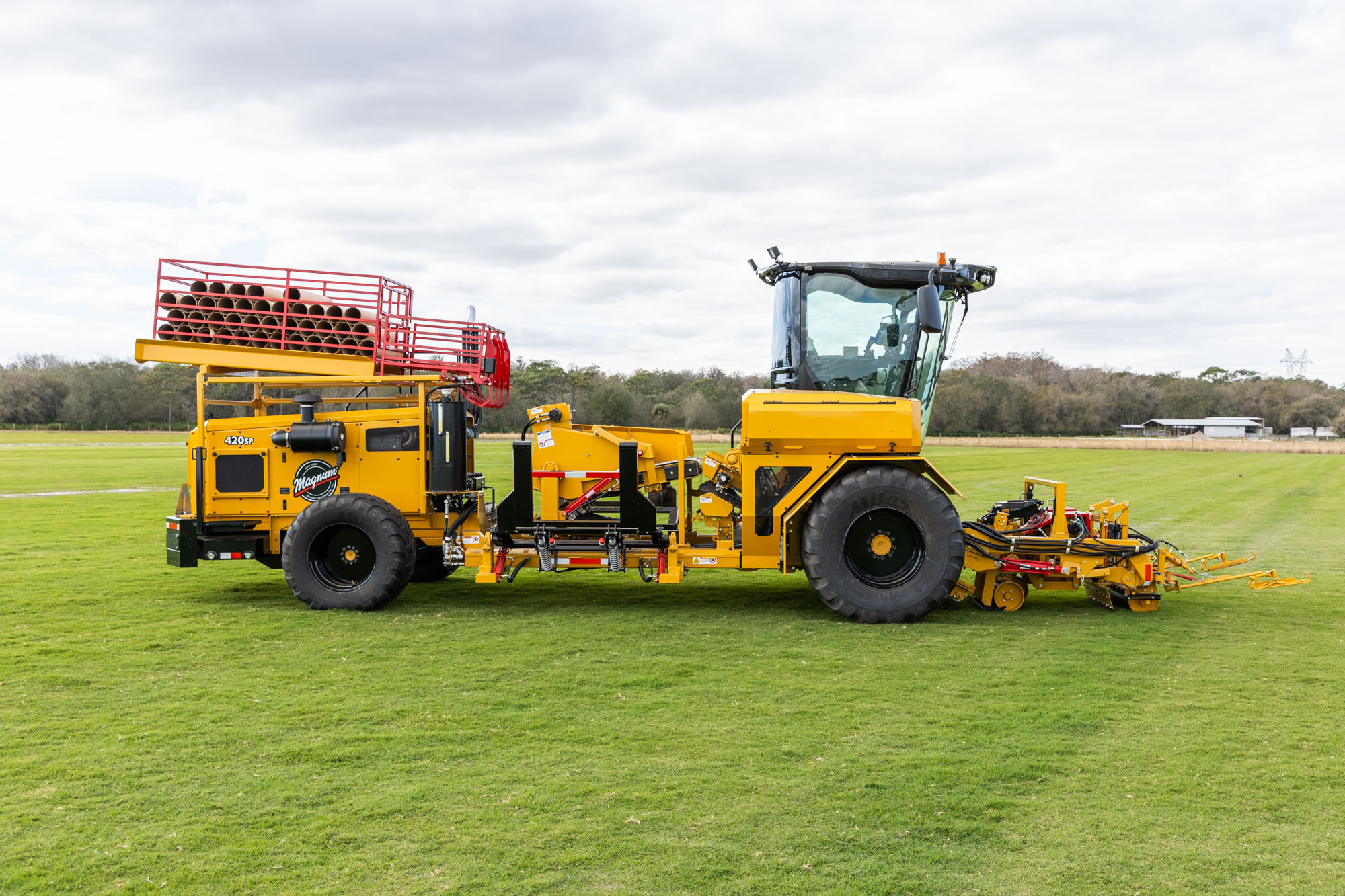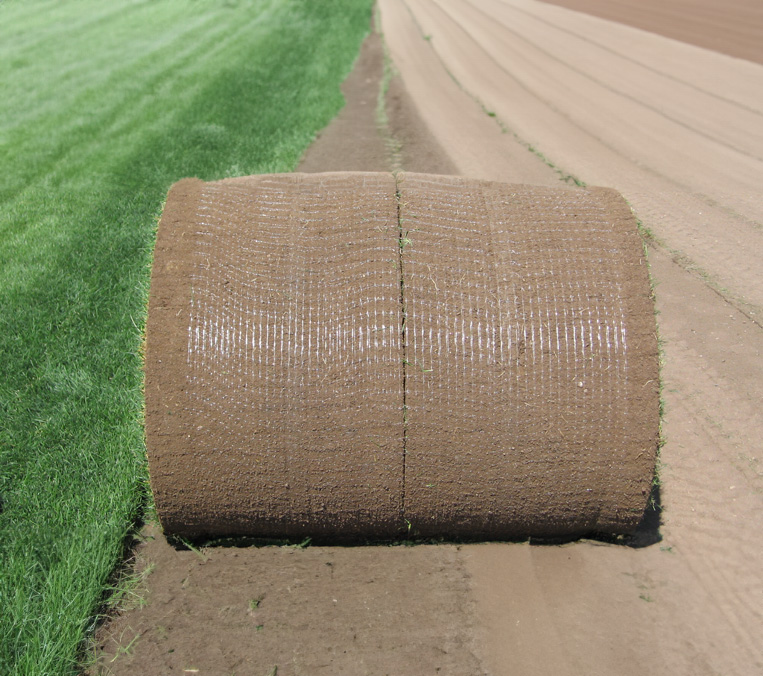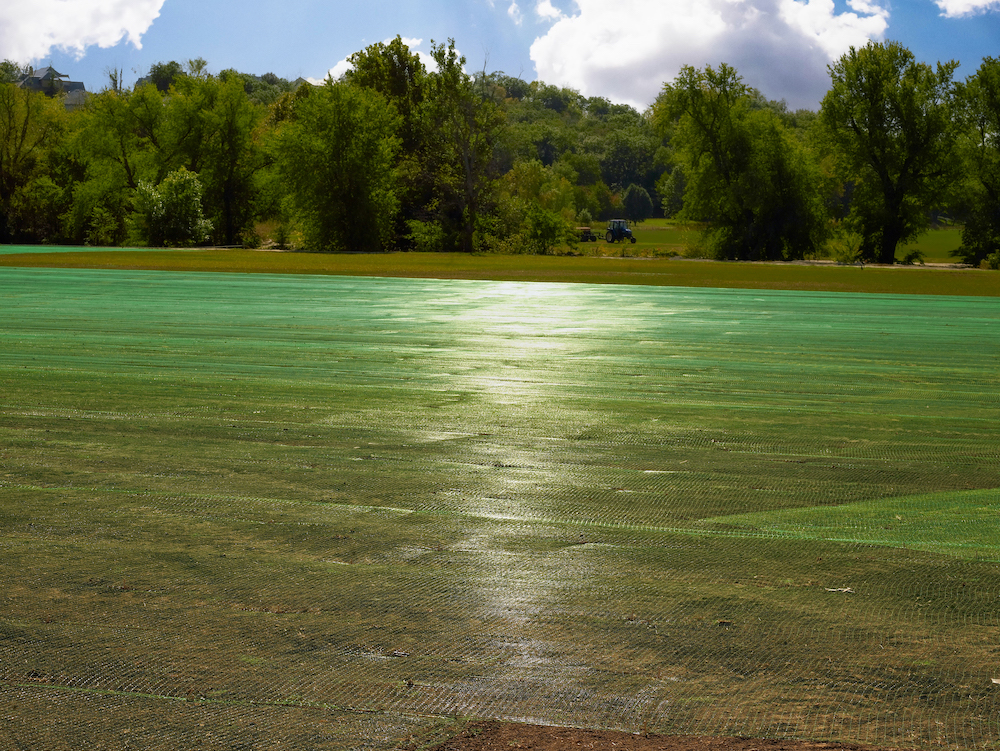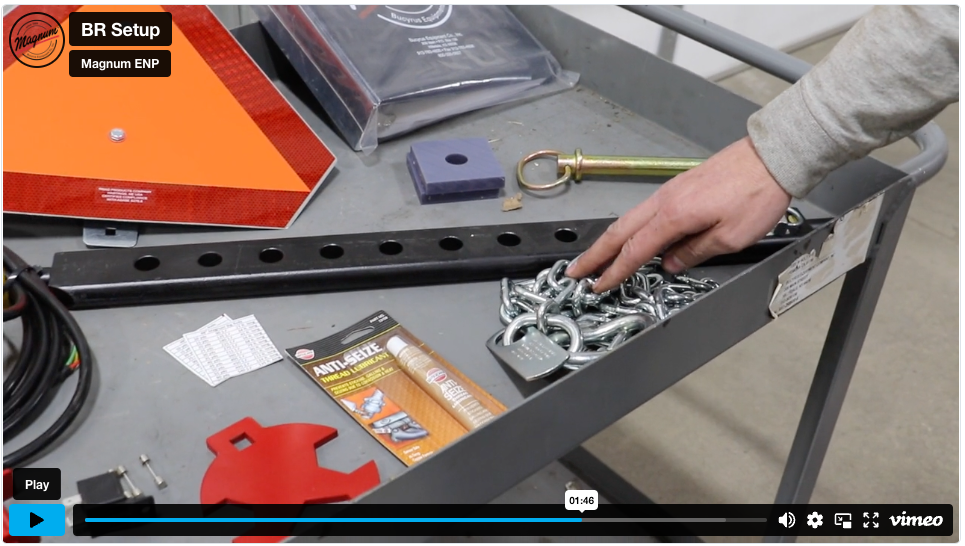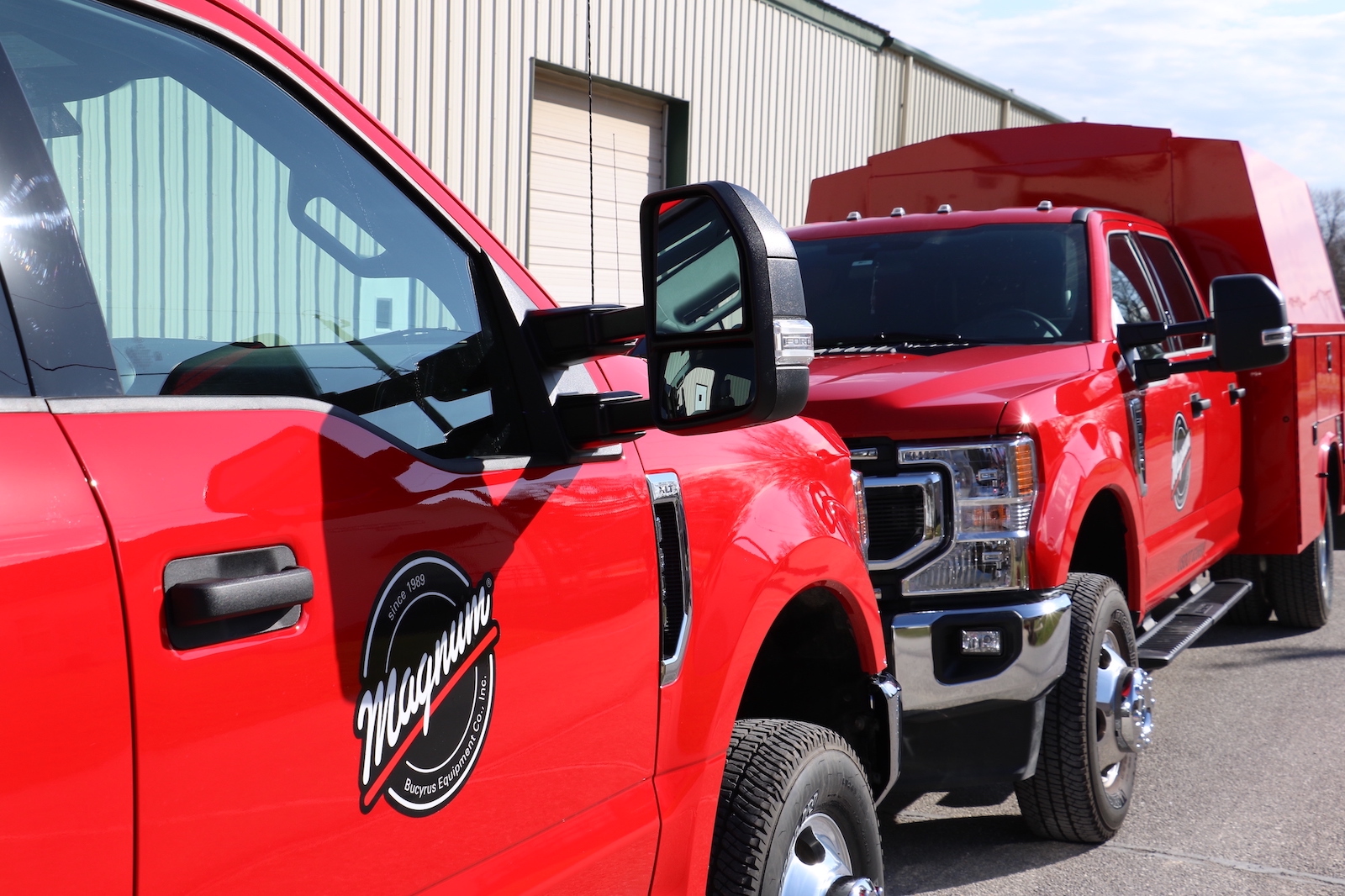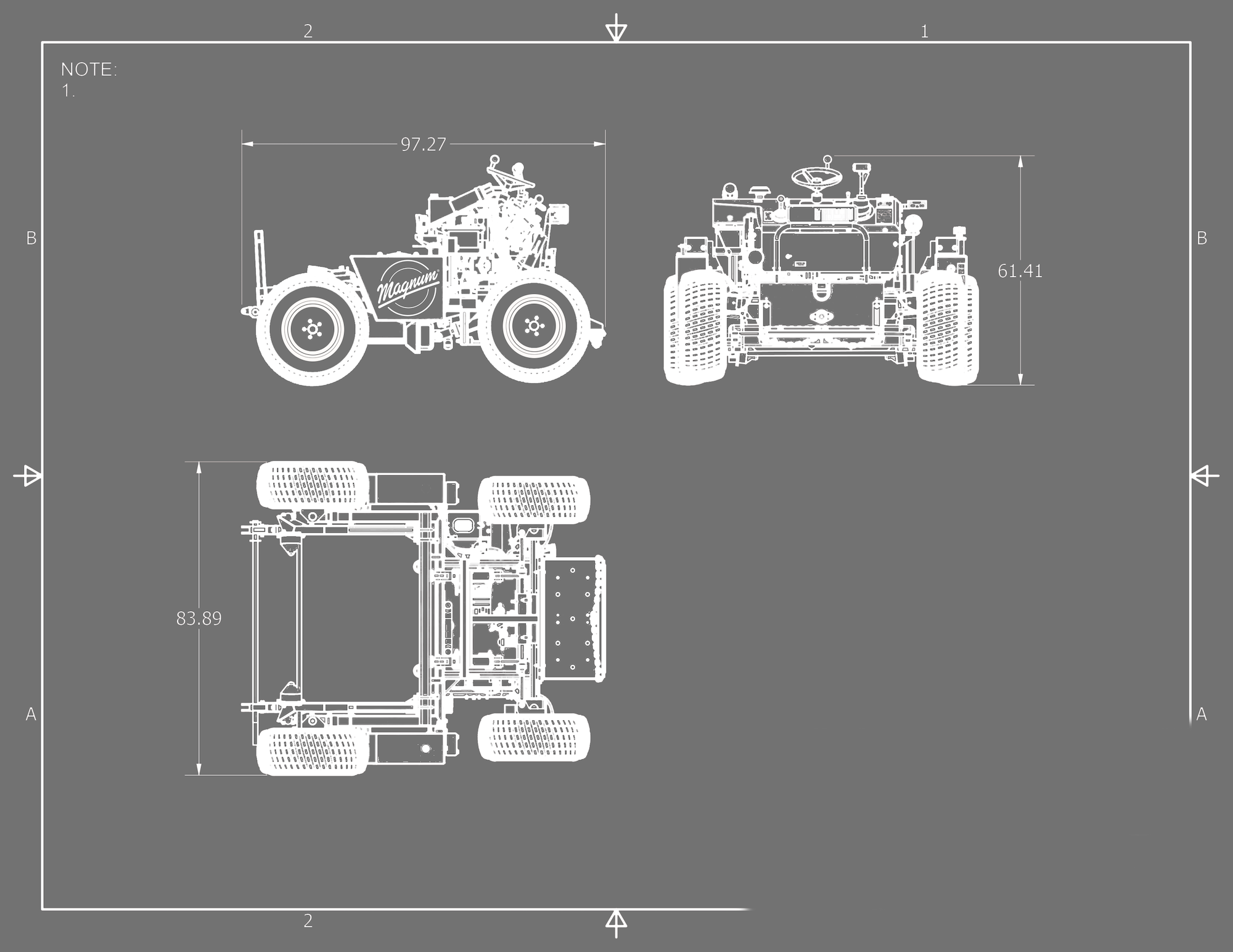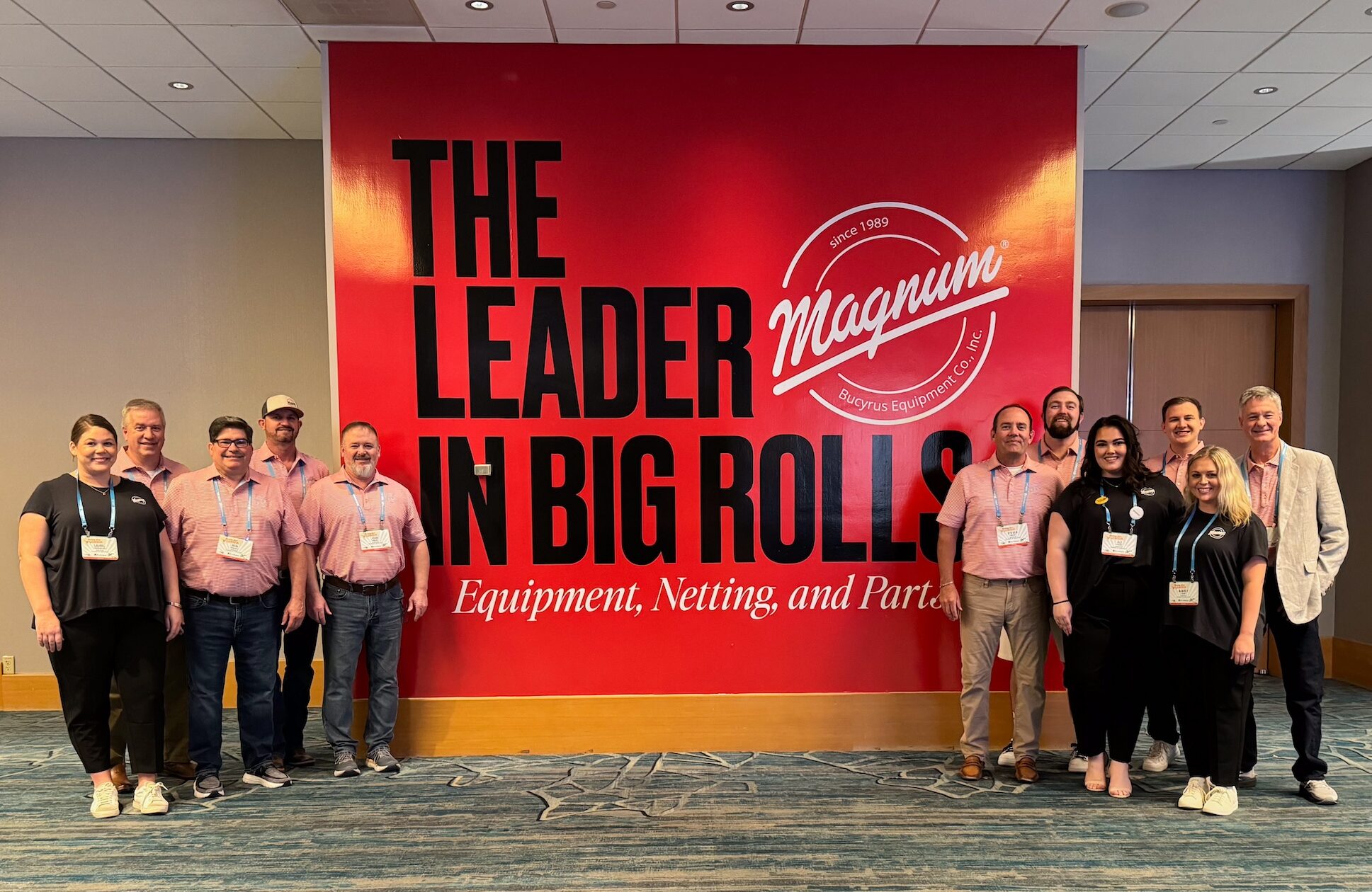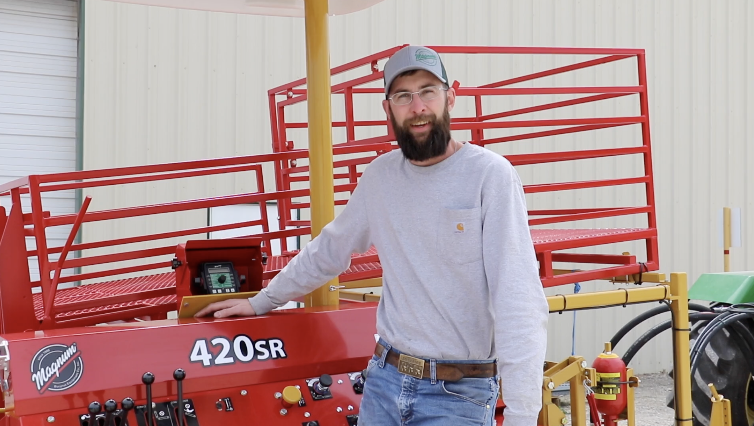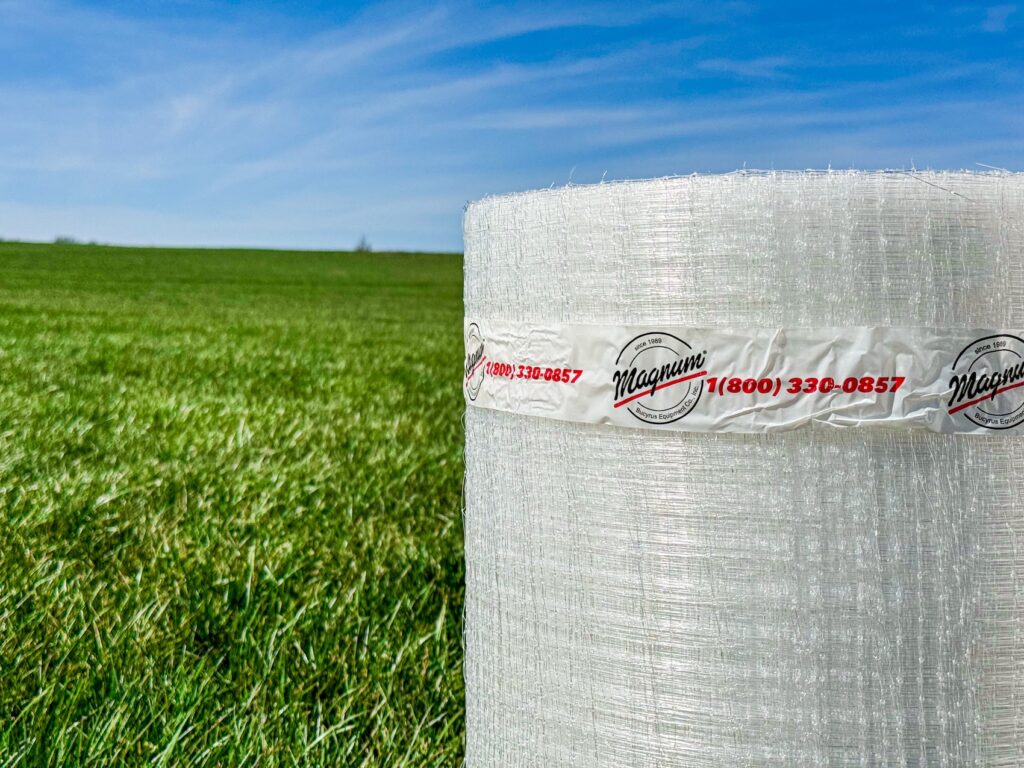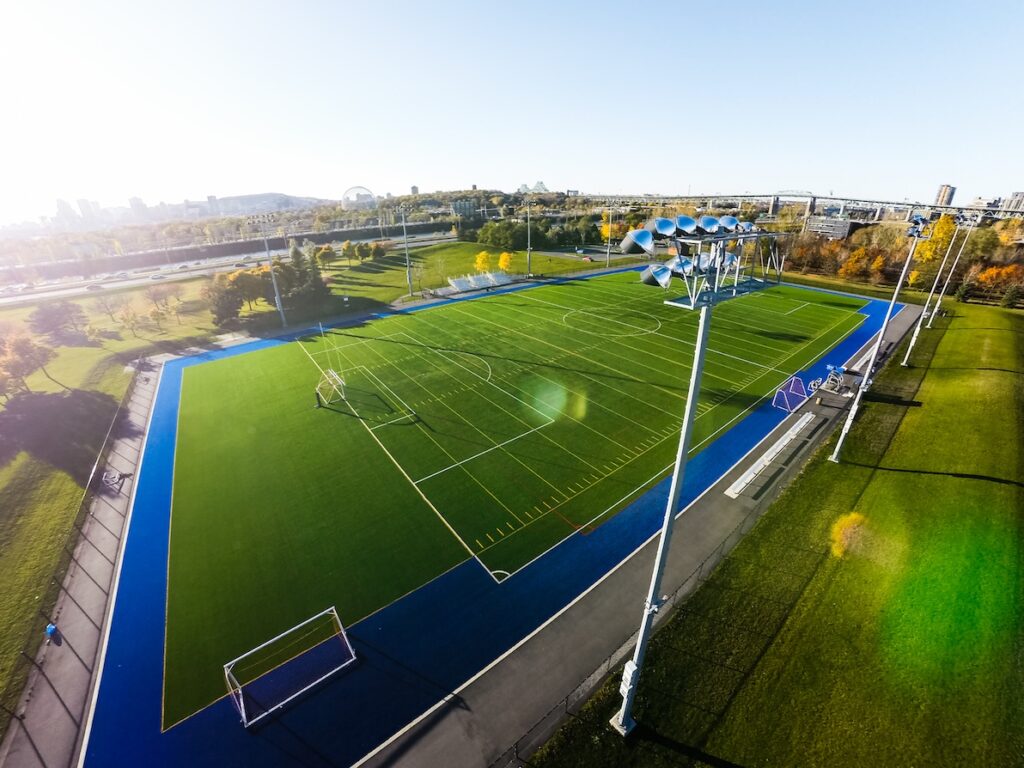
What connects pro football teams, little league legends, and international soccer clubs? Dedication, passion, and quality sod come together to make every season memorable. But creating great green spaces doesn’t happen overnight! As the trusted, behind-the-scenes partner for professional and recreational stadiums, Magnum is an MVP in field construction projects around the world.
Read on to learn the important roles our machines play, or talk to our team and find the ideal innovations for your project!
Sourcing Your Sod
Before a single sod roll hits the big time, groundskeepers take their time to source the exact type of grass for their field. Choosing the right variety, of sod is essential for a sports stadium to provide a safe playing surface that stands up to the grueling demands of sports. Turf managers in every stadium factor in several essential elements during the selection process. The quality of this sod is just as important, and that is why the harvest of it makes a huge difference.

Aesthetics
This is often the first factor that installers consider for a sports field. While color, texture, and density are important for the visual appeal of a stadium, there’s more to every roll! Clean-cut edges deliver that seamless finish, enhancing both the overall quality as well as the ease of installation.
With unique cutting heads, Magnum harvesters make precise cuts for sod farmers dedicated to excellence. Our BR, SR, SRA and SP models feature patented floating, anti-vibration cutting heads.With two independent cutter heads, or one solid head, Magnum’s patented floating cutter heads maintain a consistent depth and quality of cut needed for high profile jobs. With quality control at the center of every machine, farmers who supply sod for field construction in the world’s most recognized stadiums are trusting Magnum as their partner!
Growth Rate
Initial establishment speed, or how quickly the sod roots and becomes ready for play, can be a significant factor, especially for installers working in a tight timeframe. After the sod is established, it can naturally repair itself. The recovery rate is also an important factor to maintain a safe, quality surface with minimal replacements throughout the season.
This is where having the right netting backing each roll makes a difference! Magnum offers a 100% biodegradable big roll net option. With a traditional plastic net, the installers must remove the netting from each roll as it is being harvested. This takes more time, labor, and dumpster fees. The biodegradable netting does not need to be removed, since it will completely degrade in the matter of weeks. This saves the installer time, effort, and labor costs.Magnum offers big roll netting in many sizes, including these100% biodegradable options!
Tolerances
Fields don’t all face the same conditions, which means that there are several factors to consider when selecting a type of grass:
Shade tolerance: Sod in a large stadium may not get as much sun as that in an open meadow, which can affect the overall health and longevity of the grass. Certain grasses are better suited for shaded areas, while others handle more intense sunlight.
Drought tolerance: Local climate determines the amount of natural rainfall the sod will receive, whereas a reliable irrigation system can mitigate the impact of a dry season. Select a type of grass that will thrive in the regional weather and field conditions.
Wear tolerance: On athletic fields that see heavy foot traffic, cleats, and high general wear season over season, stronger grass can resist immediate damage and remain healthy.
Logic and Logistics
Once you’ve chosen the right type of sod for your project, next determine how much you need and when you’ll need it! To order the right amount of sod, simply find the square footage of your field and divide that by the square footage included in your desired roll. Since each roll is a long rectangular strip, you’ll also need to factor in necessary cuts for curves and edges. We recommend ordering a 5% overage to account for unforeseen needs or mistakes. It’s always better to have too much than not enough when installing!
The Case for Big Rolls
A typical big roll of sod can range from 100 to 400 square feet, depending on thickness of the cut. In addition to efficiently covering vast expanses of sports stadiums, the size of these rolls allows up to 75% fewer seams and a more consistent, finished appearance. Instead of the painstaking work of manually unloading and unrolling dozens of small rolls, most professional grounds crews choose big rolls for easier handling and installation. Magnum’s A-Series installer further simplifies the installation process of these heavy sod rolls that weigh about a ton!

On-Site Handling
Careful delivery, unloading, and on-site placement minimizes stress and damage to the sod during field construction. Timing the delivery of fresh sod with the completion of the site preparation allows for a streamlined install and successful soil integration. The complete install should take place no more than 24 hours after delivery to keep the soil and grass healthy. To unload big rolls, forklifts are typically adequate. When the roll touches down, our A-Series installer is the best option for safely moving big rolls around the job site.
Installation Made Easy
An old adage in the trades is “right tool for the right job.” In sports field construction, having the right installer makes all the difference in the efficiency and outcome of a project. That’s why hundreds of grounds crews use our A-Series installer every day. At CPKC stadium in Kansas City, world’s largest professional women’s soccer stadium, their crew trusted this machine for a quick, quality installation. In this short video, you can see how the A-Series helps in each stage of the process!
Starting Somewhere
Since the KC Current’s pitch is a standard rectangle, the field construction crew starts installing fresh sod on the long side of the stadium pitch.. This helps keep every roll of sod straight and true throughout the entire 120-yard field.. To accurately place each big roll, the A-Series installer features hydraulic arms and intuitive hand controls that let the operator handle heavy rolls with ease. The floatation tires evenly distribute the weight of the installer as it rolls over the freshly graded soil and laid sod, to minimize the footprint..
Keep On Rolling
As the crew positions each roll of sod, the operator of our installer can quickly grab new rolls and keep the installation process moving. To position each roll, 2 or 3 team members will cut the strip to form around curves, and align each edge to minimize the appearance of seams. By cutting the edges in a brick-like pattern, each strip joins together for a more uniform surface. With each roll, the machine operator and the guys on the ground work together for an efficient installation. Thanks to the precise controls, tight turning radius, and simple operation, the A-Series installer makes this part of field construction fast, accurate, and easy!
A Photo-Worthy Finish
After the entire field is laid out, the crew uses rollers to smooth out any uneven surfaces and establish a healthy root system with the underlying soil. Our A-Series installer helps take care of any major needs with the optional roller attachment. With precise hydraulic arms handling the roller, the operator maintains a consistent pressure without harming the sod or causing soil compaction. This process ensures a smooth transition and facilitates the roots’ ability to integrate into the underlying soil.
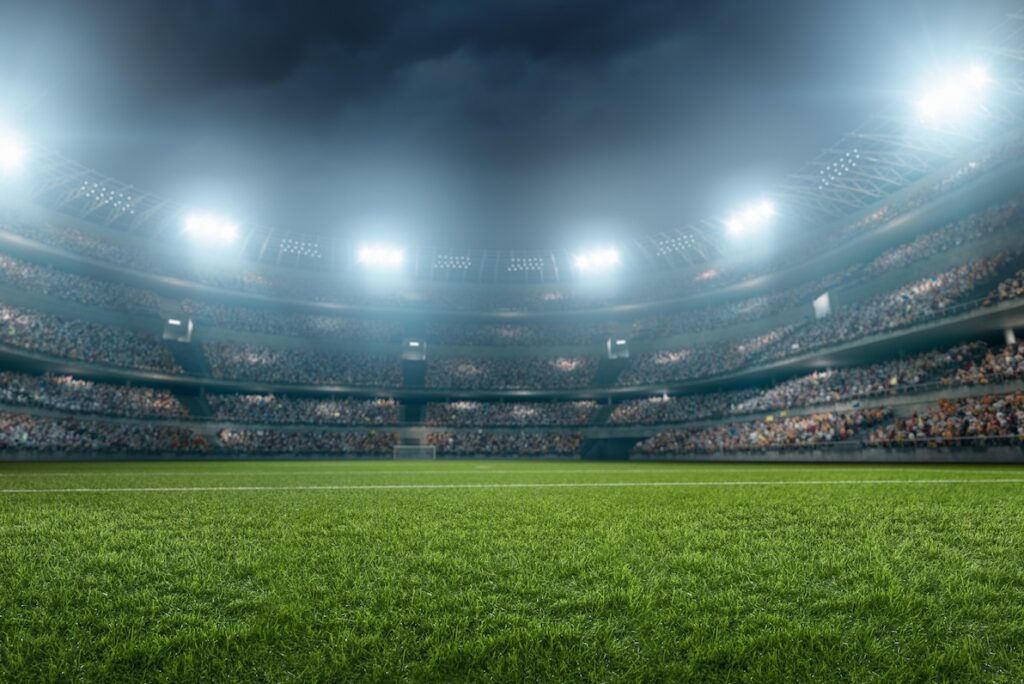
Post-Installation Care
While the most labor-intensive part of athletic field construction is the initial installation, the work is far from over for groundskeepers! Immediately following the installation, crews will need to thoroughly water the sod to keep the grass healthy. For most professional stadiums, irrigation systems easily handle this. But in municipal and high school-level fields, crews will need to source a lot of water for this stage of their project! Proper watering ensures that the soil is moist, but not waterlogged. For the first few weeks after installation, water frequently to foster strong root system development.
Ongoing Maintenance
By following the best practices immediately following the installation process, your sod will develop a strong root system that helps it stay useful and beautiful season after season. Regular mowing, fertilization, and watering schedules provide a safe playing surface any team can be proud of.
Although major league fields implement extraordinary maintenance methods like grow lights and specialty fertilizers, the basics of upkeep are shockingly similar to your own home! In our related read, we cover the cornerstones of proper sod maintenance.
The Basics of Sod Maintenance
The ENP MVP
So how do we know so much about sod? For over 30 years, Magnum has pushed the sod production industry forward with every big roll-focused innovation! From humble beginnings on our family farm to shipping equipment, netting, and parts internationally, we’re proud to be a highly respected turf equipment manufacturer. No matter where you’re rolling out the future, talk to our team, or get pricing online to see why we’re an MVP in field construction projects around the world!

